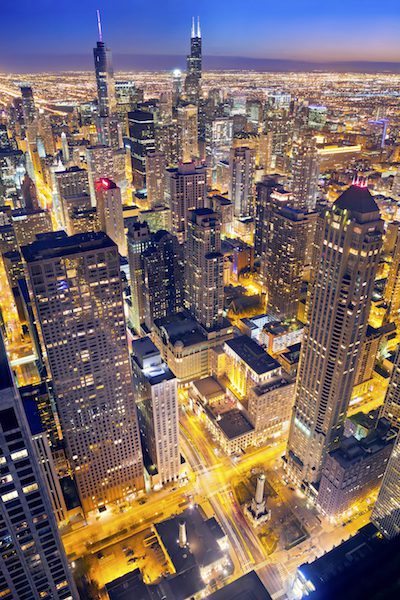Some of the largest cities in the country, including New York, Chicago, Atlanta and 34 others have already set emissions reductions goals of 80 percent or higher by 2050, aligning with the scientific consensus of what will be required to avoid the most disastrous effects of climate change, finds a new report by World Wildlife Fund (WWF) and ICLEI-Local Governments for Sustainability. The report also finds that 62 cities are already committed to meet or exceed the emissions targets announced by the federal government. Should all cities analyzed in the report meet their 2050 targets, they will reduce carbon dioxide pollution by a minimum of 328 million tons per year – the equivalent of switching 45 million homes to solar power.
“As naysayers wring their hands about the Clean Power Plan, these American cities are already on a path to even stronger action,” said Lou Leonard, WWF’s vice president of climate change. “As first responders to the expensive and growing impacts of climate change, it makes sense that mayors are way ahead on this challenge.”
 The most extensive national report of its kind, Measuring Up 2015: How Local Leadership Can Accelerate National Climate Goals analyzes data from 116 US cities representing more than 14 percent of the US population, and includes in-depth case studies of four communities: Atlanta, Cincinnati, Minneapolis, and Portland, Ore. The data and city profiles demonstrate that local governments can cut greenhouse gas emissions, reduce climate threats, and achieve multiple community goals like lower energy costs, better air quality, improved health, and enhanced economic development.
The most extensive national report of its kind, Measuring Up 2015: How Local Leadership Can Accelerate National Climate Goals analyzes data from 116 US cities representing more than 14 percent of the US population, and includes in-depth case studies of four communities: Atlanta, Cincinnati, Minneapolis, and Portland, Ore. The data and city profiles demonstrate that local governments can cut greenhouse gas emissions, reduce climate threats, and achieve multiple community goals like lower energy costs, better air quality, improved health, and enhanced economic development.
“In addition to doing the right thing for the planet, these local climate leaders are setting themselves up for success in economic development and job creation as well. As federal policies and private sector investment catch up with local action, these communities are perfectly positioned to attract capital and cut carbon pollution, because they have been doing it for years,” said Brian Holland, Director of Climate Programs for ICLEI USA.
Although local governments have demonstrated the capacity and will to address climate change, they are also facing some common challenges. The report suggests that the most ambitious local goals can only be achieved alongside an enabling state and national policy framework. To that end, the report calls for a series of national and state-level policies and incentives to ensure that city-level initiatives have sufficient resources to achieve their goals:
- Implement Clean Power Plan regulations proactively through local-state-federal partnerships around energy efficiency and renewable energy.
- Increase funding for low-carbon, varied transportation options.
- Put in place national policies to encourage private sector investment in green urban infrastructure.
- Remove federal barriers to Property Assessed Clean Energy (PACE) financing.
- Establish pricing mechanisms for greenhouse gas emissions.
Measuring Up 2015 is part of a larger effort on behalf of WWF and ICLEI to empower mayors to serve as climate ambassadors in local, state, national, and international policy dialogues. Together with the National League of Cities and the US Green Building Council, they established a Local Climate Leaders Circle as part of their Resilient Communities for America campaign to bring together and support a delegation of leading US mayors to actively participate in the COP21 discussions in Paris this December.
“Leadership from cities, states and businesses is critical in Paris as a way to go beyond the modest targets that governments have proposed and to begin to close the emissions gap toward a future where warming remains below 1.5 to two degrees Celsius,” said WWF’s Leonard. “It is encouraging that city leaders understand that Paris is an all-hands-on-deck moment and are ready to do their part.”